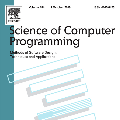The success of deep learning methods relies on the availability of well-labeled large-scale datasets. However, for medical images, annotating such abundant training data often requires experienced radiologists and consumes their limited time. Few-shot learning is developed to alleviate this burden, which achieves competitive performances with only several labeled data. However, a crucial yet previously overlooked problem in few-shot learning is about the selection of template images for annotation before learning, which affects the final performance. We herein propose a novel Sample Choosing Policy (SCP) to select "the most worthy" images for annotation, in the context of few-shot medical landmark detection. SCP consists of three parts: 1) Self-supervised training for building a pre-trained deep model to extract features from radiological images, 2) Key Point Proposal for localizing informative patches, and 3) Representative Score Estimation for searching the most representative samples or templates. The advantage of SCP is demonstrated by various experiments on three widely-used public datasets. For one-shot medical landmark detection, its use reduces the mean radial errors on Cephalometric and HandXray datasets by 14.2% (from 3.595mm to 3.083mm) and 35.5% (4.114mm to 2.653mm), respectively.
翻译:深层次学习方法的成功取决于是否有贴有良好标签的大型数据集。然而,对于医学图像而言,说明如此丰富的培训数据往往需要有经验的放射学家,并耗尽有限的时间。为减轻这一负担,开发了几张短片的学习,以取得具有竞争性的性能,而只有几个标签的数据。然而,在几张短片学习过程中,一个至关重要但以前被忽视的问题是选择模板图像进行批注,这影响到最后的性能。我们在此建议采用新的样本选择政策,在几发医学里程碑检测中选择“最有价值的”进行批注。 SCP由三部分组成:(1) 自行监督培训,以建立事先经过训练的深度模型,从放射性图像中提取特征;(2) 将信息补补丁本地化的要点建议;(3) 代表搜索最有代表性的样本或模板的评分刺激。SCP的优势表现在三种广泛使用的公共数据集上的各种实验。用于一发式医学标志性检测,其使用减少了Cephallom3-3.95毫米至14毫米之间的平均辐射误差。




